
Полная версия
Master it: How to cook today

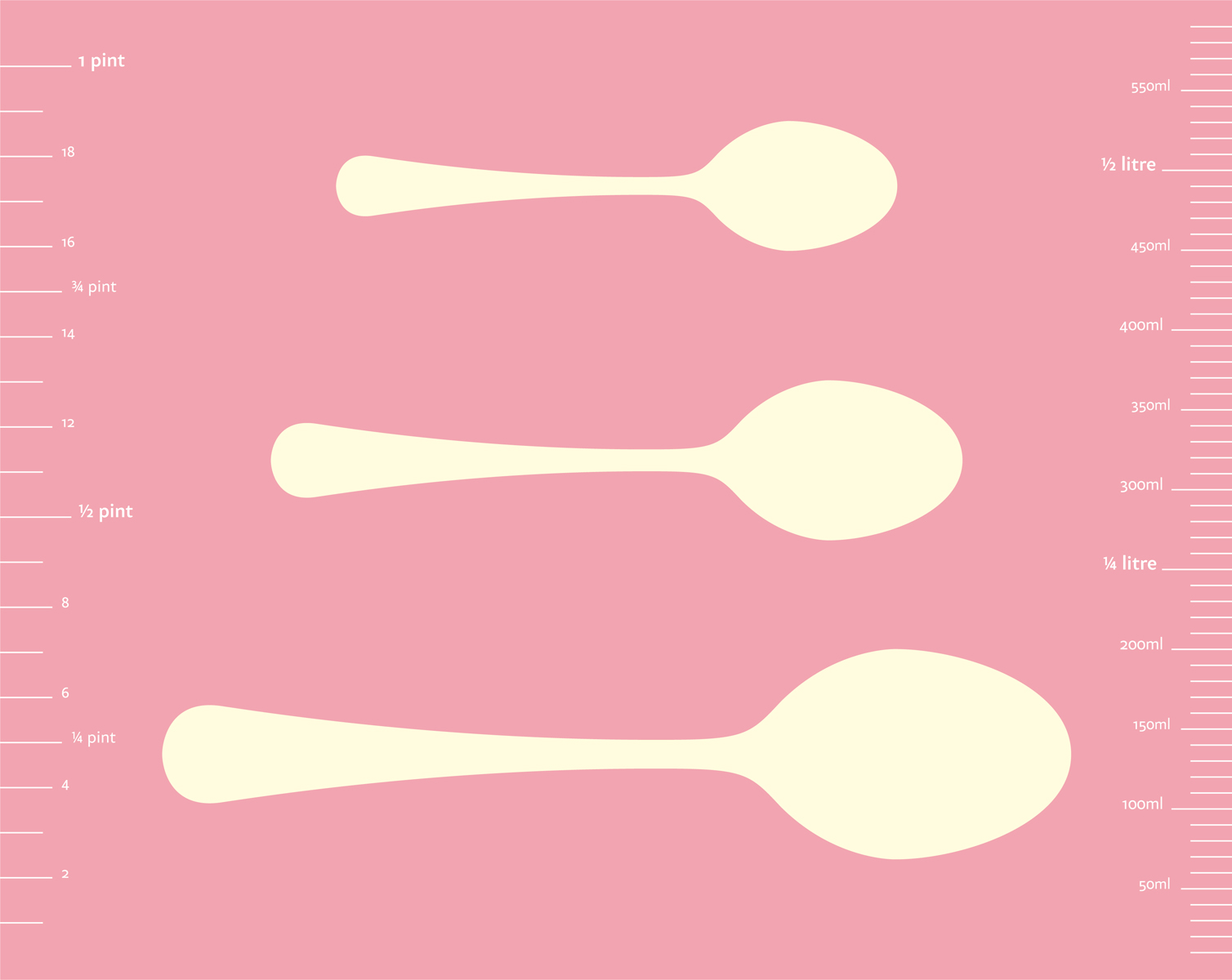
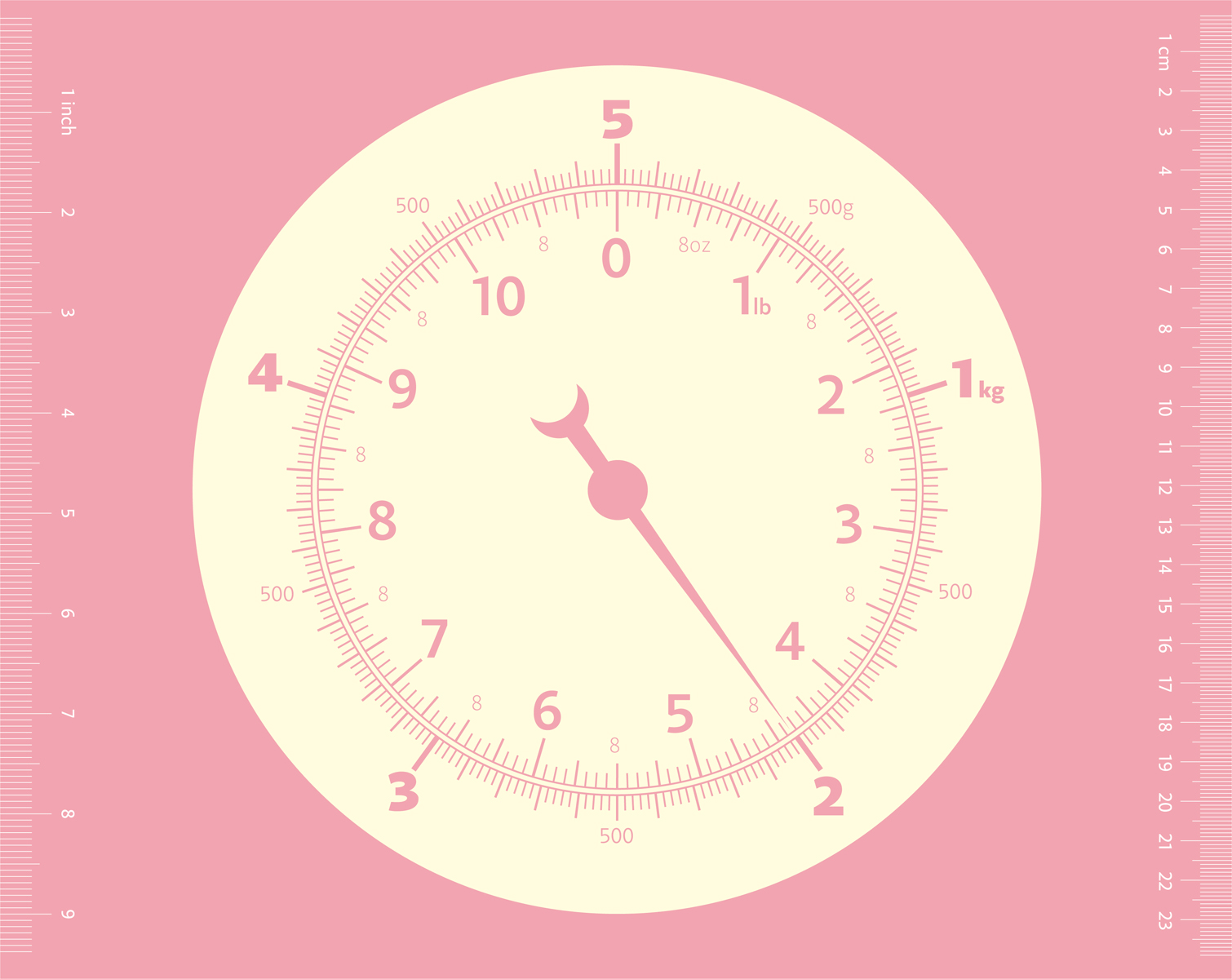
Master it
How to cook today
Rory O’Connell

First published in Great Britain by Fourth Estate
a division of HarperCollinsPublishers
1 London Bridge Street
London SE1 9GF
www.4thestate.co.uk
Text copyright © Rory O’Connell 2013
Photography by Laura Hynd
Designed by We Made This
The right of Rory O’Connell to be identified as the author of this work has been asserted by him in accordance with the Copyright, Designs and Patents Act 1988
A catalogue record for this book is available from the British Library
Excerpt from The Oxford Companion to Food by Alan Davidson (2006) quoted by kind permission of Oxford University Press.
ISBN 978-0-00-744728-2
All rights reserved under International and Pan-American Copyright Conventions. By payment of the required fees, you have been granted the non-exclusive, non-transferable right to access and read the text of this ebook on-screen. No part of this text may be reproduced, transmitted, downloaded, decompiled, reverse engineered, or stored in or introduced into any information storage and retrieval system, in any form or by any means, whether electronic or mechanical, now known or hereinafter invented, without the express written permission of HarperCollins. The author asserts the moral right to be identified as the author of this work.
This is a work of fiction. Names, characters, places, and incidents either are the products of the author’s imagination or are used fictitiously. Any resemblance to actual events, locales, organizations, or persons, living or dead, is entirely coincidental and beyond the intent of either the author or the publisher.
Ebook Edition © MAY 2013 ISBN: 9780007468799
Version 2015-02-16

Rory O’Connell is a teacher at, and co-founder of, the Ballymaloe Cookery School in East Cork. He has cooked in some of the world’s best kitchens, with some of the biggest names in food, and has taught many of the rising stars of the next generation of chefs. With over thirty years’ experience cooking and teaching, he is uniquely equipped to share his expertise and knowledge.


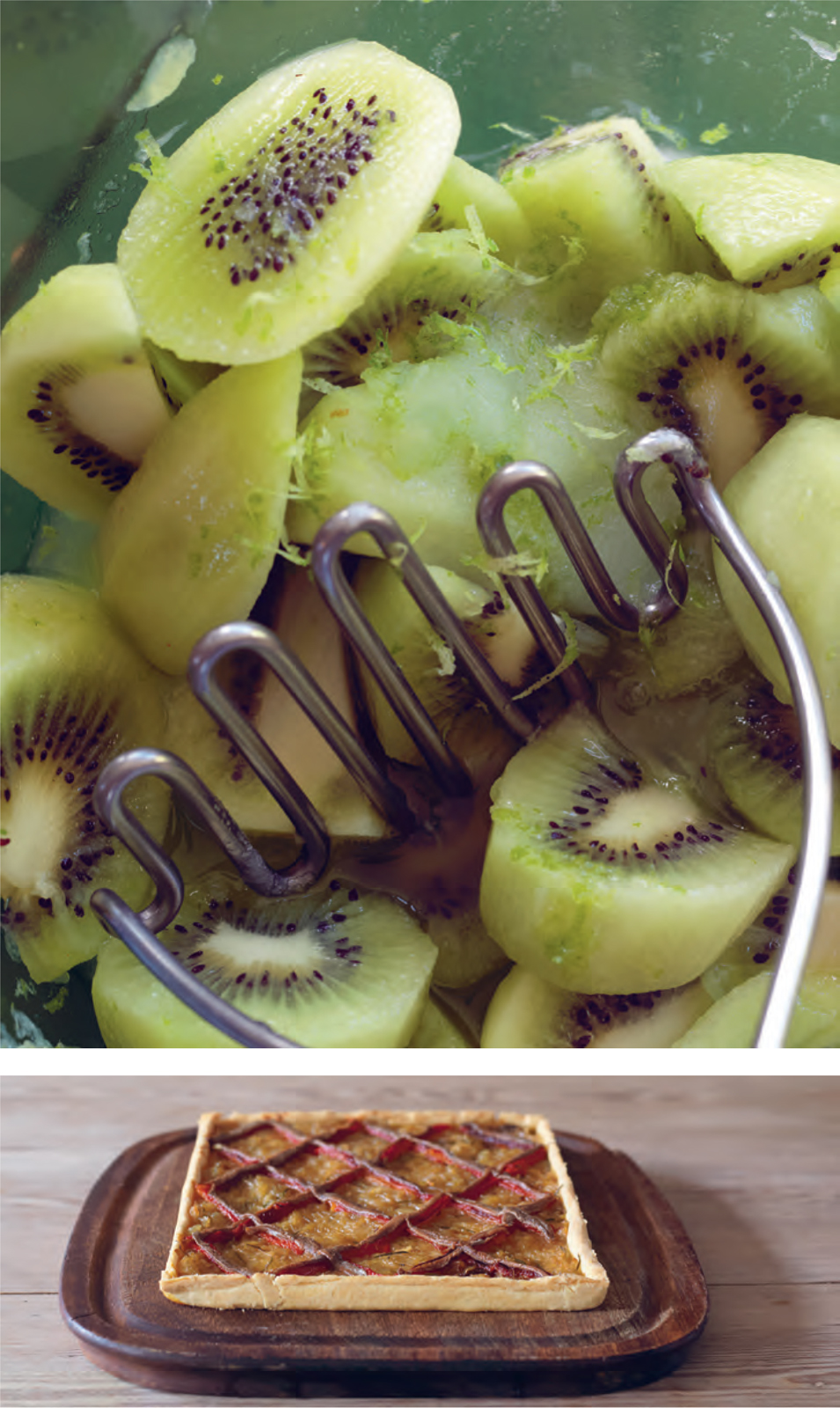
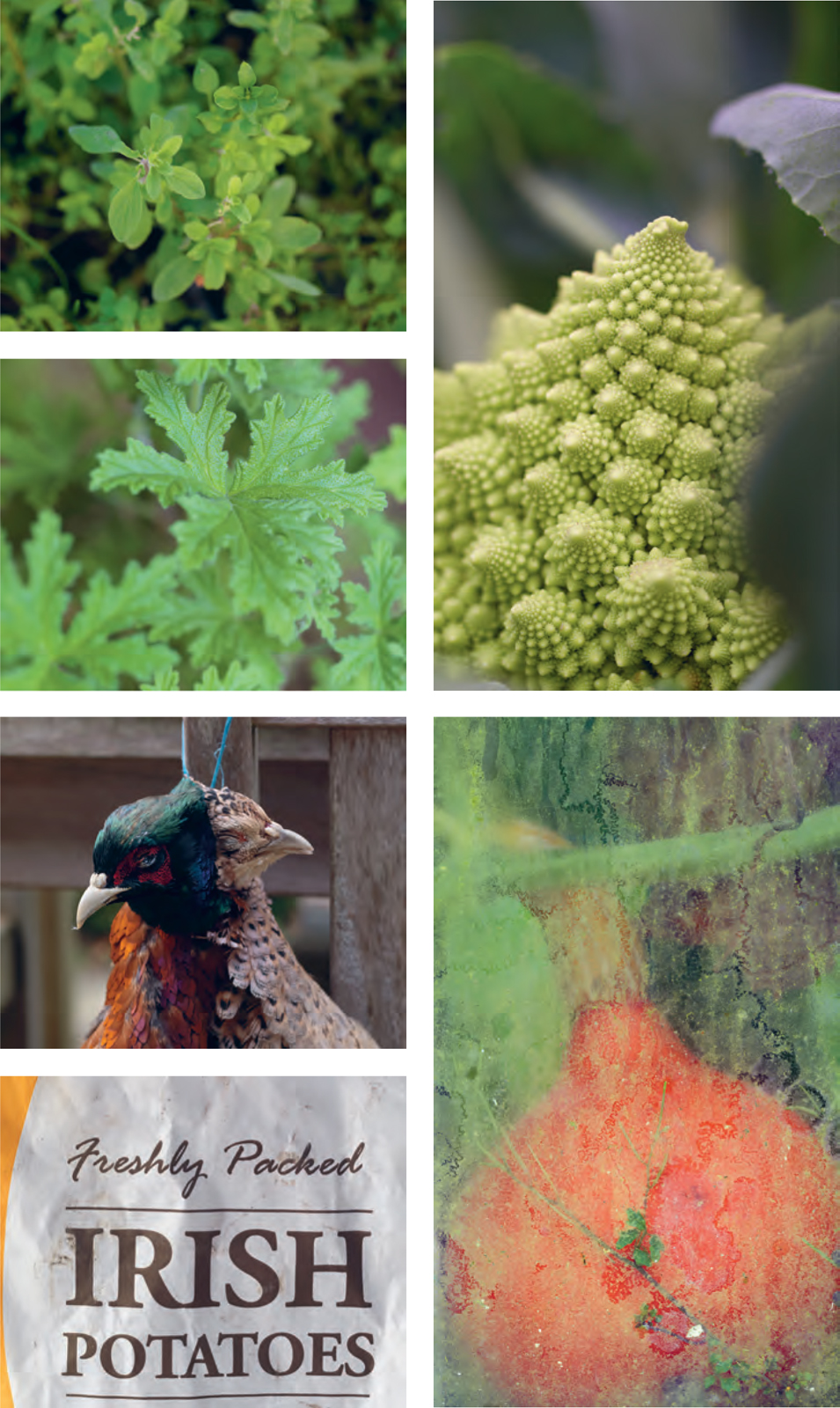


This book is dedicated to the memory of my mother Elizabeth O’Connell, and to my sisters Darina, Blanaid and Elizabeth, and my brothers William, David, Aidan, Tom and Richard
Contents
Copyright
Author biography
Dedication
Introduction
Shop well – eat well
Getting started – get organised
Kit
Essentials
Chicken and other broths
Vegetable soups
Savoury tarts
Salads and dressings
Pan-grilling and pan-frying
Roasting
Casserole-roasting
Baked fish
Green vegetables
Roots and alliums
Potatoes
Rice
Pulses – beans, peas and lentils
Simple soda breads
Sweet essentials
Fruit fools, compotes and salads
Biscuits
Ice creams, sorbets and granitas
Meringues
Warm puddings
Cold puddings
A few cakes
Acknowledgements
List of recipes
About the publisher

Introduction
I love cooking and I love teaching people how to cook – that is why I have written this book.
To cook well, it helps if you love and value food, as this is where it all starts. I cannot separate the cooking from what I am cooking. I feel bound to do well by the ingredients, and learning how to recognise good ones is crucial to becoming a good cook.
By cooking them well I honour the soil, the waters, the air, the planet, the efforts of the farmers, fishermen, producers and purveyors – everyone who got the ingredients to my kitchen.
This repertoire of recipes that I have chosen, though by no means exhaustive, should be a good starting point for the modern cook. The recipes are based on important techniques that all cooks will benefit from. When you master a technique, such as making a shortcrust pastry and lining a flan ring, a year-round soup formula to follow the changing ingredients of the seasons, using gelatine, making mayonnaise and so on, you open up a huge range of possibilities. That is the aim of this book – to demystify; to arm you with skills; to help you avoid the mistakes that my cooks, students and indeed I myself have made; to cook lovely food.
I have chosen my words carefully, highlighting the crucial ones to describe the particular details of a technique or the distinguishing features of a good ingredient.
This is not a ‘chuck it in and see how it goes’ book. I find that approach irksome and unfair, as unless the cook is utterly instinctive and much practised, this approach is fraught with pit falls. Food is too precious and expensive for that sort of game of chance.
So many times, I have witnessed the wide-eyed amazement and delight of a cook who, when finally cajoled into reading, weighing, heating and timing a set of ingredients, has produced a dish that has previously eluded them.
My approach to cooking is simple and not new. Use the best ingredients you can find, get organised and follow the recipe. A potter will have his own recipe for success and will measure his carefully chosen clay, set his kiln at the correct temperature, shape his pots and bake them for the correct length of time. If he doesn’t follow all of the steps, he will most likely have an oven full of pieces of pot rather than the desired perfectly formed vessel. So it is with cooking.
On a deeply personal level, I am charmed by what the earth produces to nourish and pleasure us. I am thrilled by the unconventional beauty of a cabbage leaf, the cross-section of a kiwi fruit closely observed, the heady smell and ticklish feel of a peach, the razor-like edges and sharp fizzing flavour of a verbena leaf, the sound of an egg shell being cracked and an egg spluttering in hot butter, the intensely modern shape and markings of a mackerel. I love it all.
Cooking is my beautiful game, my centre court, my George Best moment. Few things make as much sense to me as cooking the ingredients that fuel and pleasure us. Nothing else grounds me as cooking does – it makes me happy.
A note on cream
In Ireland, the cream I generally use, and the one that is most widely available, is called ‘fresh cream’ with a fat content of 35–40%, I refer to it in the recipes as ‘regular cream’. It is a good all-rounder, rich enough for whipping and for use in sweet and savoury sauces and in ice cream. It is similar to the British ‘whipping cream’ but you can also use double cream in its place.
Spoon measurements
All spoon measurements in this book are rounded unless stated otherwise. ‘Rounded’ means the same volume of ingredient on top of the spoon as below. For example, a rounded spoon measurement is the same as two level spoon measurements.
Oven temperatures
All oven temperatures in this book are for conventional ovens. If you have an exclusively fan oven, refer to your oven manual for instruction. The general rule is that you subtract 20°C (about 36°F) from the recommended temperature when using a fan oven.
Shop well – eat well
If you don’t shop well, you won’t eat well – it’s as simple as that. So this requires a bit of effort. If you rely on the corner store for all your food, much as we love them, need them and use them for their convenience, the chances are, except in most unusual circumstances, that you will not get the variety and quality of ingredients you need in order to have a varied basket of food that is full of the nutritional value we require.
Make a plan and make a list
Be aware of what seasonal ingredients are available and use that information to help you plan your meals. Seasonal ingredients taste better, are easier to cook and are the best value for money. Some weekend newspapers have lists in their food sections of what is in season at any time of the year. Use these lists to help you plan your meals.
If your house is a place where meals need to be cooked every day, it’s worth sitting down for half an hour at the weekend to make a simple list. This will save you time and money when you go shopping, help prevent waste and give you a chance to cast your eye over the variety of foods that you and those you care for will be eating in the days ahead. This list will help you to buy the five oranges you really need rather that the ten you might not use, and so on.
When shopping, be 90% focused and 10% open-minded – that 10% gap gives you the freedom to snap up the ingredient not planned for, but clearly at the time in great condition and a good addition to your basket.
With your list in hand, use specialist shops such as the butcher, fishmonger and greengrocer. Build up a relationship with the person whom you rely on for the food to sustain you through life, because that person has an important role to play in your wellbeing. Ask them what they consider to be the best value at that time of the year. Let them know when an ingredient was a success, and also if it did not meet your expectations.
Try to allow time to get to a farmers’ market. In some cases that will require a bigger effort. When you get there, have a walk around. Take your time to have a look at everything that’s available. Look for the ingredients that are practically jumping off the table with freshness. Those are most likely local, and due to their short journey may be the best value going.
Some of the specialist ingredients such as smoked fish or cheese, meat and poultry, may seem expensive – they are a treat, but you can balance the cost of those hand-crafted artisan products with the less expensive but no less worthwhile seasonal vegetables and fruit.
Buy just what you need. Balance your budget in this way.
Shopping can be pleasant, even enjoyable. It can be sociable and educational and it’s a crucial part of the process that ends up with good food on the table.
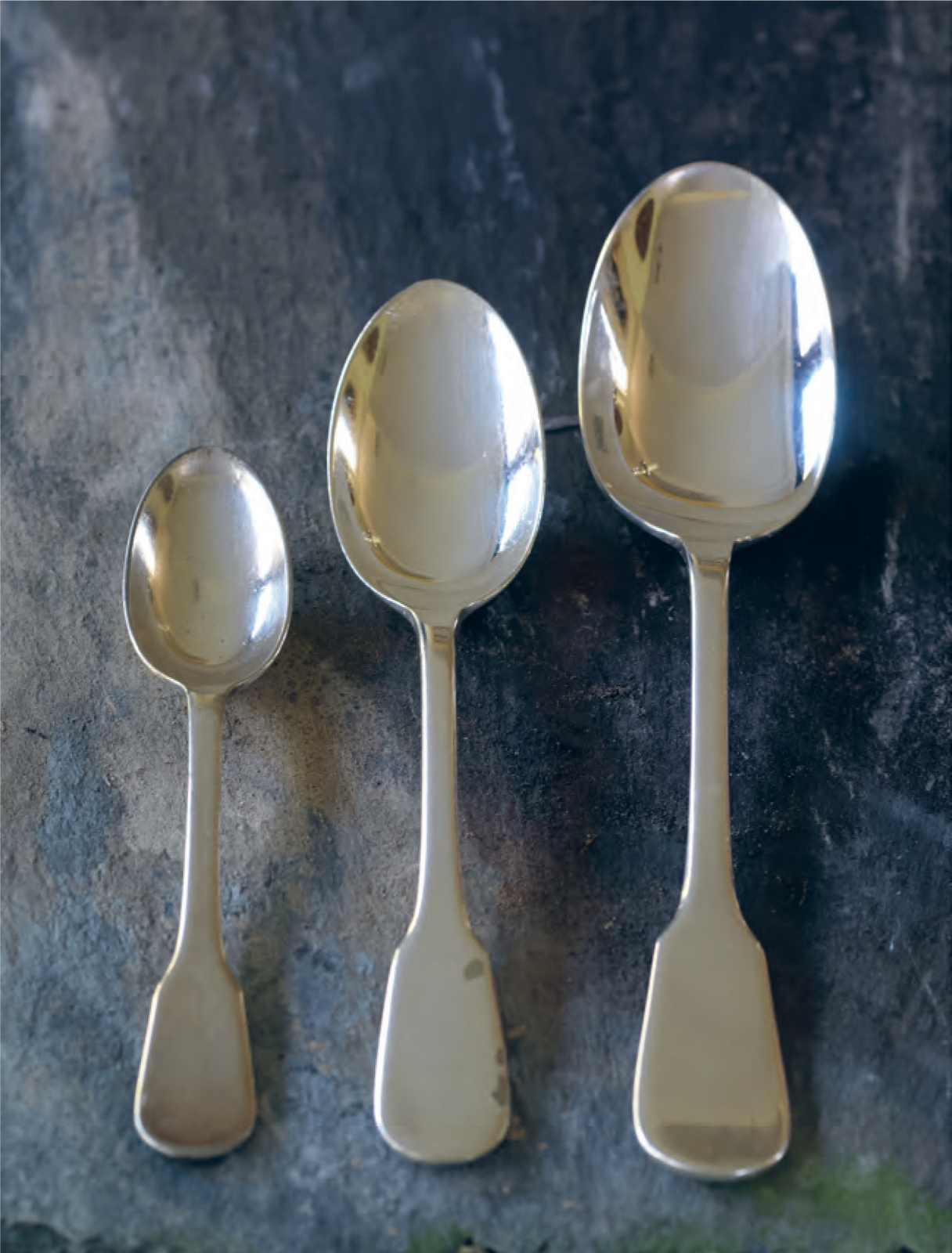
Accurate measuring spoons: teaspoon, dessertspoon and tablespoon
Getting started – get organised
Being organised is a great help in the kitchen. Once you have decided what you are going to cook and have completed your shopping, you are ready to start cooking.
Sit down for a moment before you start and write out a work list, ‘an order of work’. Read through the recipes and decide how you will divide up your time, what needs to happen first and so on. This will mean you are organising your cooking in the correct order. The dishes that take longest to cook or that need to rest and chill, such as pastry, need to go on first and so on. When you do this, nothing is forgotten and it helps you to make the best use of your time. You then have the added pleasure of ticking things off your list as you go, a simple pleasure that I enjoy greatly.
Having written out your order of work, I suggest that you measure out all your ingredients before you start to do any cooking. Keep plastic containers and the like for this purpose. Keep the measured ingredients for each recipe on a separate tray, or, if you want to be pedantic like me, line them up in a row in the order they go into the dish. I find this time-saving and satisfying, and I can then focus on the dish rather than juggling with cooking and measuring at the same time.
Multiple ingredients that go into a dish at the same time can be combined in one bowl or on a plate, thereby leaving less clutter on your work surface. I get a considerable amount more done when I measure ahead like this. The clearer my workspace is, the clearer my brain seems to be and the more I enjoy the cooking process.
Try to wash up as you go. You don’t want a mountain of washing-up facing you when you have finished cooking.
I keep my salt and sugar in little open-faced bowls beside the hob, along with the pepper mill, so that they are immediately available when I need them.
I like to keep a little butter at room temperature in a butter dish, so that if I am grilling or pan-frying it is soft and easily spreadable – this means I can smear the ingredient with the minimum amount of fat, but still enough to add flavour and prevent the ingredient from sticking.
Store cupboard
Have a small store cupboard of essential and regularly used ingredients to make the shopping for a particular meal less onerous, and to have the key ingredients for the making of a meal at short notice. See the suggested list below, and tailor it to suit your likes and needs. Shop for quality rather than quantity for the store cupboard. This is not a war chest to see you through a crisis, but a regularly used source of flavoursome ingredients that will add the oomph to the more easily found staples.
Maldon sea salt
Olive oil
Sunflower oil
White and red wine vinegar
French mustard
Anchovies, salted or in oil
Capers
Dried chillies
Lentils
Chickpeas
Local honey
Chocolate, best quality, 62% and 70% cocoa solids
Dried fruit: prunes, raisins, sultanas and cherries
A pot of raspberry jam
Flour: plain, self-raising, strong white
Small quantities of regularly used whole spices, such as cumin, coriander, cardamom, nutmeg
Ground turmeric
Basmati rice
Risotto rice
Couscous
Olives
Chicken stock (in freezer)
Fish sauce (nam pla)
Parmesan and Cheddar cheese (in the fridge)
Chorizo
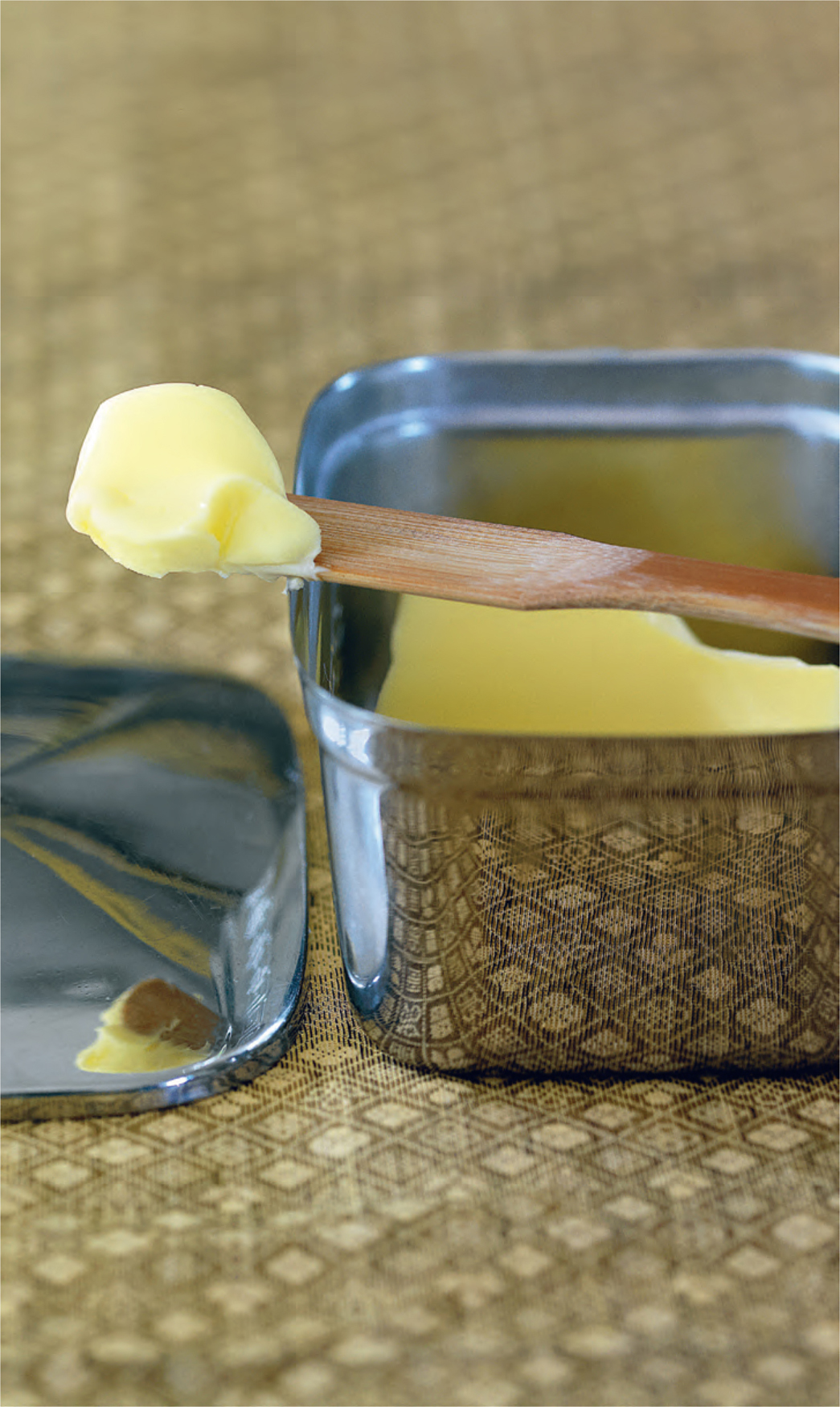
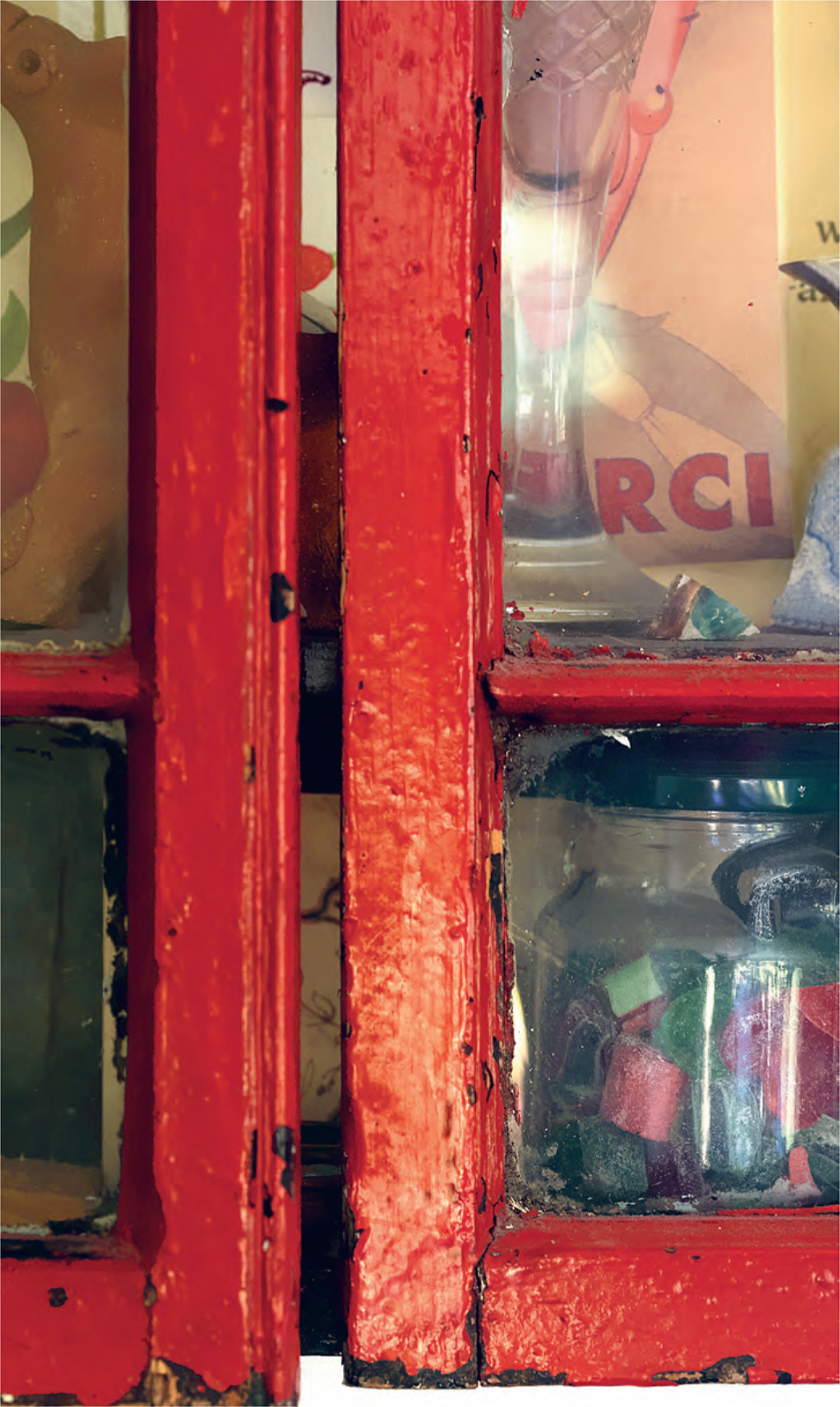
The freezer
I find the freezer very useful for preserving certain foods, cutting down on waste and generally as an organisational aid. However, the bigger your freezer is, the more likely you are to have it packed with food that you may not get to use quickly enough. The most important thing to remember when freezing foods is that the sooner you use the food, the better it will taste.
Only freeze food that is in perfect condition.
Freeze foods in suitable containers such as freezer bags. Recycled food containers such as those used for yoghurt or milk can be perfect, providing you have remembered to save the lids.
Freeze foods in small quantities, so that you will not have to defrost more than you need.
Put a clear label listing the food and the date of freezing on each item.
Be careful when defrosting certain raw foods such as chicken and pork to ensure that the food is completely defrosted before cooking. I usually remove chicken and pork from the freezer the evening before use, sit them in the fridge overnight and finish defrosting them at room temperature the next day.
I buy fruit during the local growing season to ensure best quality and value, and freeze it in tightly sealed bags or punnets. Raspberries, loganberries, tayberries and blackberries, black, white and redcurrants freeze well. Cranberries and blueberries are also worth the effort. Bitter Seville oranges for marmalade freeze surprisingly well and after defrosting the rind softens easily during the cooking. This means you don’t have to make all your marmalade for the year during the oranges’ short winter season.
Basil is the only herb I freeze. I freeze a little basil in August to use straight from the freezer later in the year, but only in sauces. The trick with basil is not to remove the container it has been frozen in from the freezer when you are retrieving some for a sauce. If the container is removed from the freezer, the basil defrosts and oxidizes instantly and when refrozen will be bitter, disappointing and a pointless exercise. When carefully handled as suggested, this frozen basil is surprisingly good and is perfect for perking up a winter tomato sauce of tinned, bottled or frozen tomatoes. The basil needs no preparation before freezing. Just make sure the leaves are fresh and unblemished.
Tomatoes are the only vegetable I freeze. Like basil, tomatoes need no preparation before freezing. They should be as ripe as possible, and will when defrosted be suitable only for cooked sauces, soups and purées. Freeze them when at their best and in season. If you have frozen the basil as well as the tomatoes, it is possible to make an excellent preserved tomato sauce during the winter months. This is a prime example of how to use your freezer to maximum effect. You have trapped the summer’s flavours for releasing during the winter. If you achieve this, bravo you.
Firm-textured fish such as salmon, turbot, brill and monkfish freeze well, but only when impeccably fresh. Before freezing, wash the fish well and make sure no trace of blood remains on the flesh or near the bones.
All poultry freezes well, either on the bone or jointed. I occasionally freeze cooked chicken bones to use for stock. That is the only case in which I freeze cooked meat. Poultry should be perfectly fresh and lightly dried with kitchen paper before freezing.
I rarely freeze meat, but if I have to save an ingredient, such as a steak or a few lamb chops, I will wrap it carefully and try to use it as soon as possible after freezing. Minced meat is really not worth freezing and will be dull and watery when defrosted.
Most soups freeze well. I don’t freeze green soups, though, as they lose their colour and delicate flavour. Freeze soups in small tightly sealed containers.
When puff or shortcrust pastry is frozen on the day it is made, it is quite successful. These are the only pastries that I feel are worth freezing. Freeze the pastry, well wrapped, in blocks close to the weight you use for your specific recipes.
I freeze white sourdough bread while still fresh to save it being wasted and then use the defrosted bread for breadcrumbs and pangrattata. The bread can of course be crumbed before freezing. Soda breads do not freeze successfully.
Clearly, freezing is an essential part of the process of making and serving ice creams, sorbets and granitas. Sorbets and granitas need to be used as soon as possible after freezing, ideally within a couple of days, as they become more icy over time and lose flavour quite quickly. Ice creams are more robust, but they too will be better the sooner they are eaten.
All meat, poultry and fish stocks freeze well, as do meat juices left from a roast.
I occasionally freeze nuts if I have overbought. They lose some of their texture as a result of freezing, but the flavour is preserved and they will not go rancid, which is what will happen to them if you store them for too long at room temperature. They are perfectly acceptable for using in pesto, pralines and cakes. Pine nuts, hazelnuts and Brazil nuts are the ones I freeze. I generally buy walnuts in the shell, so the necessity to freeze them does not arise; however, shelled walnuts can be frozen.
Egg whites freeze perfectly and will be wonderful for meringues and soufflés when defrosted. They defrost in an hour. Organised cooks will freeze the whites in ice-cube trays and pop them out individually as needed. Otherwise, drop the defrosted whites on to a scale, allowing 25g per individual white.
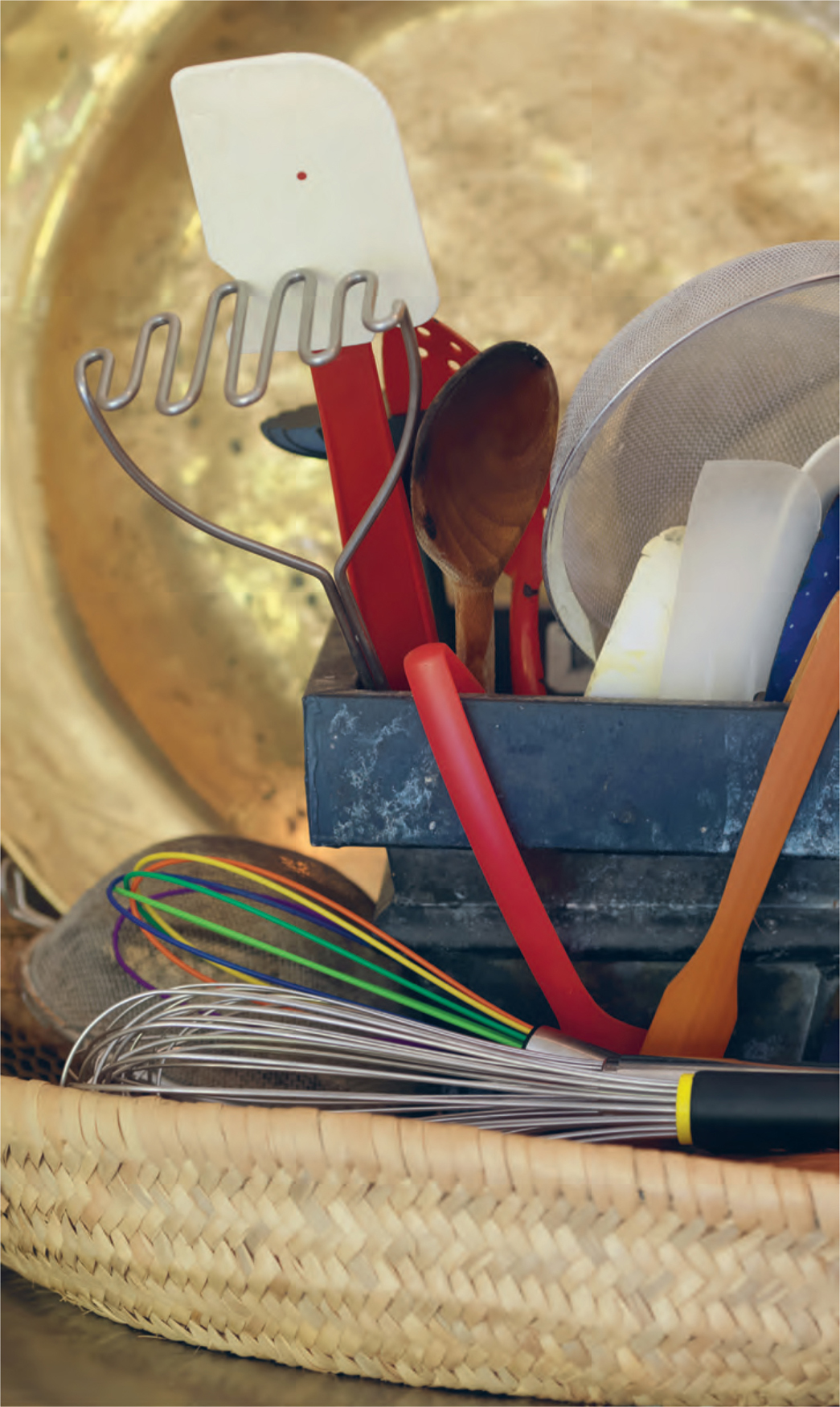
Kit
You must have equipment that will work. A knife that is not sharp will blunt your enthusiasm. A saucepan that is so light that it would burn water will spoil your food and drive you mad. None of us would go out for a game of football and kick a burst ball around, and so it is in the kitchen – you need the proper bits of kit to make it work properly. Have a look at my suggested list.
Knives
Chopping knife
Flexible filleting knife
Vegetable or fruit knife
Carving knife and fork
Steel, for keeping your knives sharp
Chopping boards
2 heavy wooden chopping boards (use the different sides for specific tasks, i.e. raw meat, cooked foods, fruit and vegetables, and fish)
Small board, for garlic
Measuring
Scales (I find the battery-operated or electric modern scales to be the most accurate)
Measuring jugs (I use heavy Pyrex jugs)
Measuring spoons: teaspoon, dessertspoon and tablespoon
Tools
Wooden spoons, a selection with round and flat bottoms (make sure the handles are not too thin, otherwise they will just swivel in your hand when you are stirring a heavy mixture)
2 flexible heatproof rubber spatulas, 1 small and 1 large
2 fish slices, 1 metal and 1 heavy plastic
Flexible palette knife
Balloon whisk
Sharp vegetable peeler
Microplane grater and protective covering
Stainless steel box grater
Japanese mandoline and safety guard
Set of thin meat skewers
2 stainless steel sieves, 1 large and 1 medium
Large straining colander
Potato masher with a medium fine mesh, or mouli-légumes with 3 different-sized grating discs
Ladles, 1 large and 1 small
2 large stainless steel serving spoons, 1 perforated
Rolling pin
2 pastry brushes
Pots and pans
Heavy-based stainless steel saucepans: at least 1 large, medium and small, with lids (I have some glass saucepan lids that I find really useful)
Small low-sided heavy-based stainless steel saucepan, with lid – this is like a cross between a saucepan and a sauté pan
Medium low-sided heavy-based stainless steel saucepan, with lid
Large and wide low-sided heavy-based stainless steel saucepan, with lid
Casseroles: ideally 1 large, medium and small, with lids



